| Switch Type: Tactile | Mount: PCB Mount (5-pin) | Spring: Single Stage | Price: $13.99 (45pcs) on Akko |
| Factory Lubed: Yes |
| Actuation Point (mm): | 2.0 | Actuation Point (mm): | 2.01 |
| Actuation Force (gf): | 48 ± 5 | Actuation Force (gf): | 48.2 |
| Total Travel (mm): | 3.8 | Total Travel (mm): | 3.66 |
| Peak Tactile Point (mm): | 0.8 | Peak Tactile Point (mm): | 0.71 |
| Peak Tactile Force (gf): | 60 ± 5 | Peak Tactile Force (gf): | 60.9 |
| Reset Point (mm): | 2.0 | Reset Point (mm): | 1.98 |
| Bottom-out Force (gf): | 60 | Bottom-out Force (gf): | 61.8 |
| Stem Length (mm): | 13.08 | ||
DISCLAIMER | Please Read:
These switches were sent by Akko for review and testing purposes. No one paid me to write this review, and impartiality will always be a top priority here at KeebWorks.
TL;DR
The Akko Bittersweet is a Cherry MX Brown clone with a noticeably heavier weighting. However, the Bittersweet switch is smoother and performs more consistently. Plus, they’re cheaper to buy.
Smoothness: 6/10
On-centre keypresses are decently smooth, with some switches being scratchier than others at very slow keypresses.
Off-centre keypresses are noticeably scratchier with more inconsistencies even at normal keypresses.
Overall, this is one of Akko’s scratchiest switches. It doesn’t happen often, but even Akko can’t always make smooth and consistent switches.

Akko Bittersweet switch disassembled.
Weighting: 6/10
Now, according to Akko these switches have a peak tactile force of 60g at 0.8mm, an actuation force of 48g at 2mm and a bottom-out force of 60g at 3.8mm.
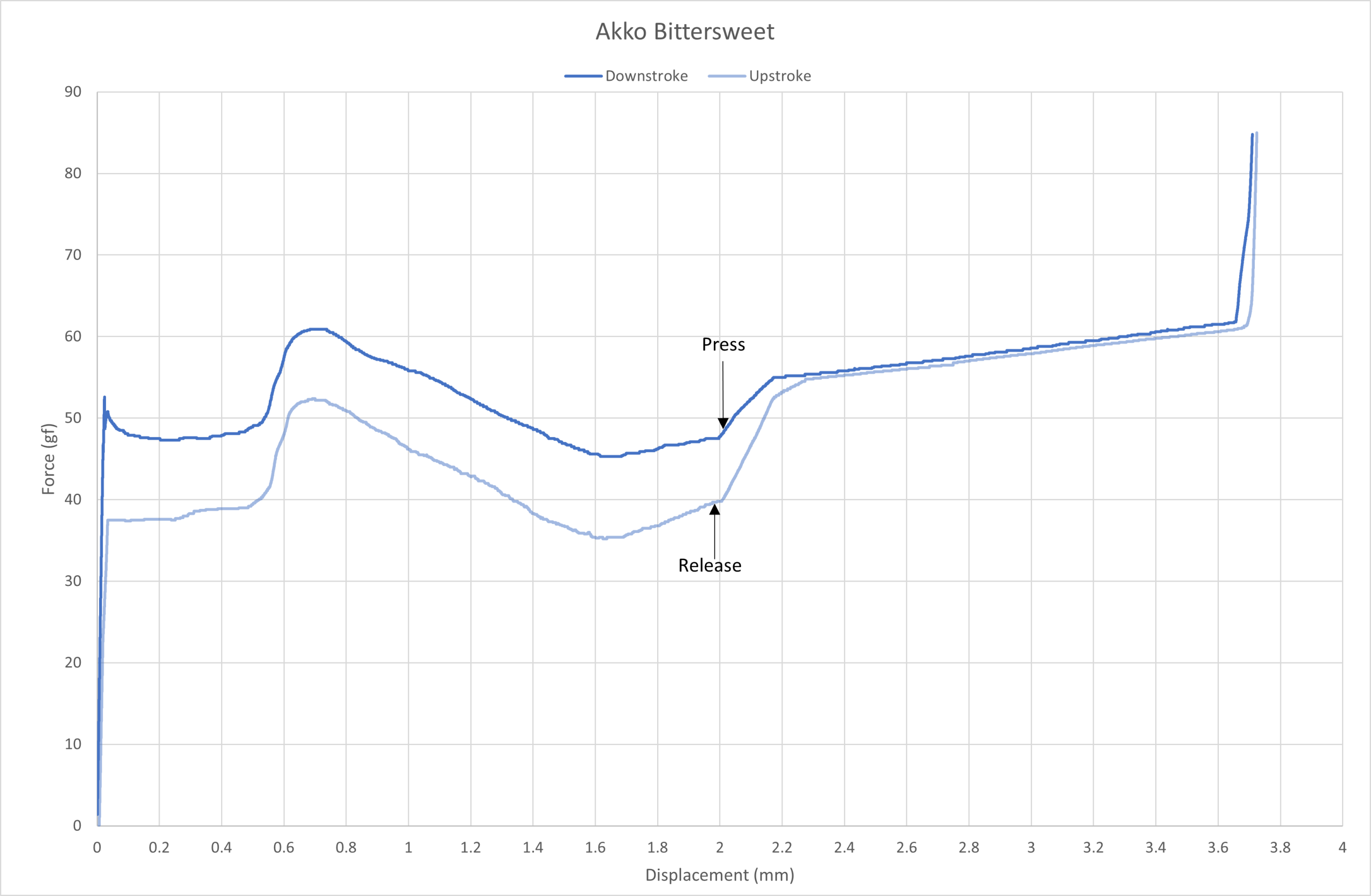
Akko Bittersweet force curve.
As you can see from the force curve above, the Akko Bittersweet is well within spec.
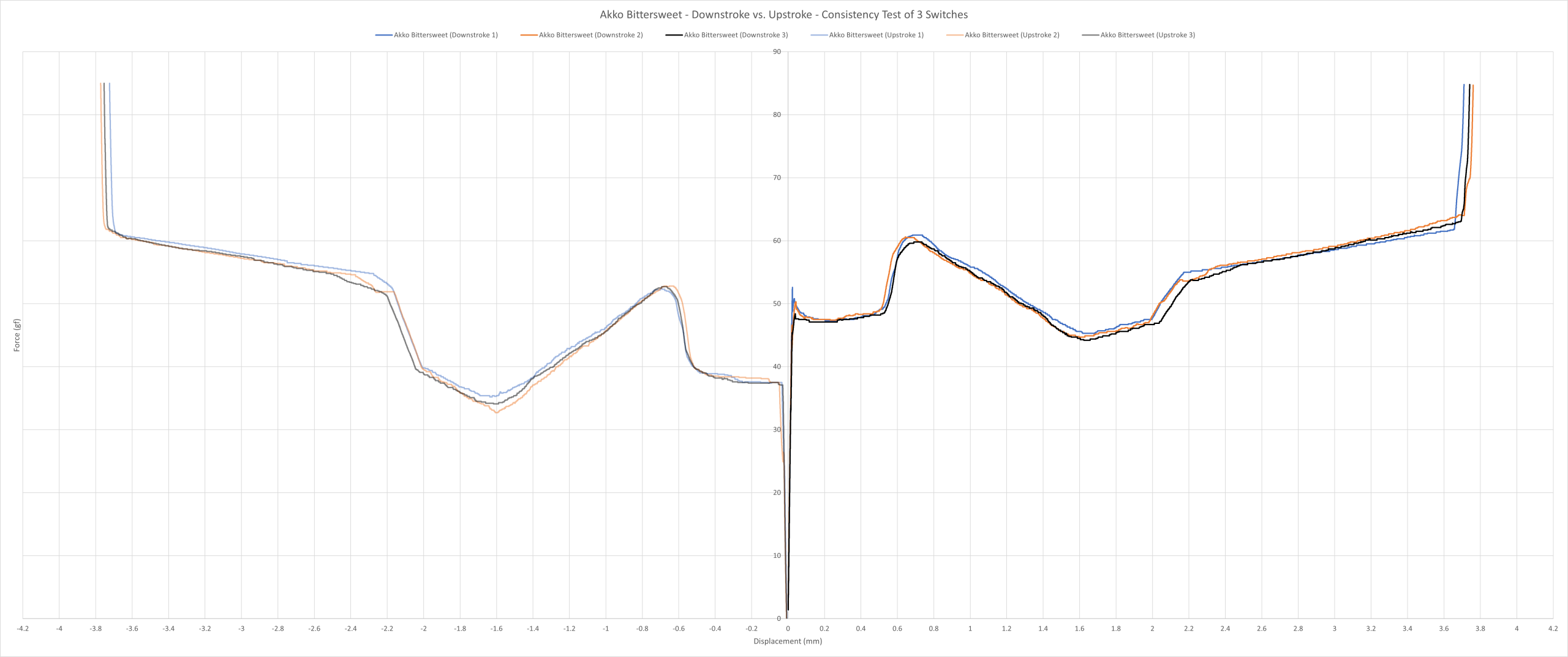
Akko Bittersweet consistency force curve.
As you can see, all 3 switches performed somewhat consistently with only small variances from one another.
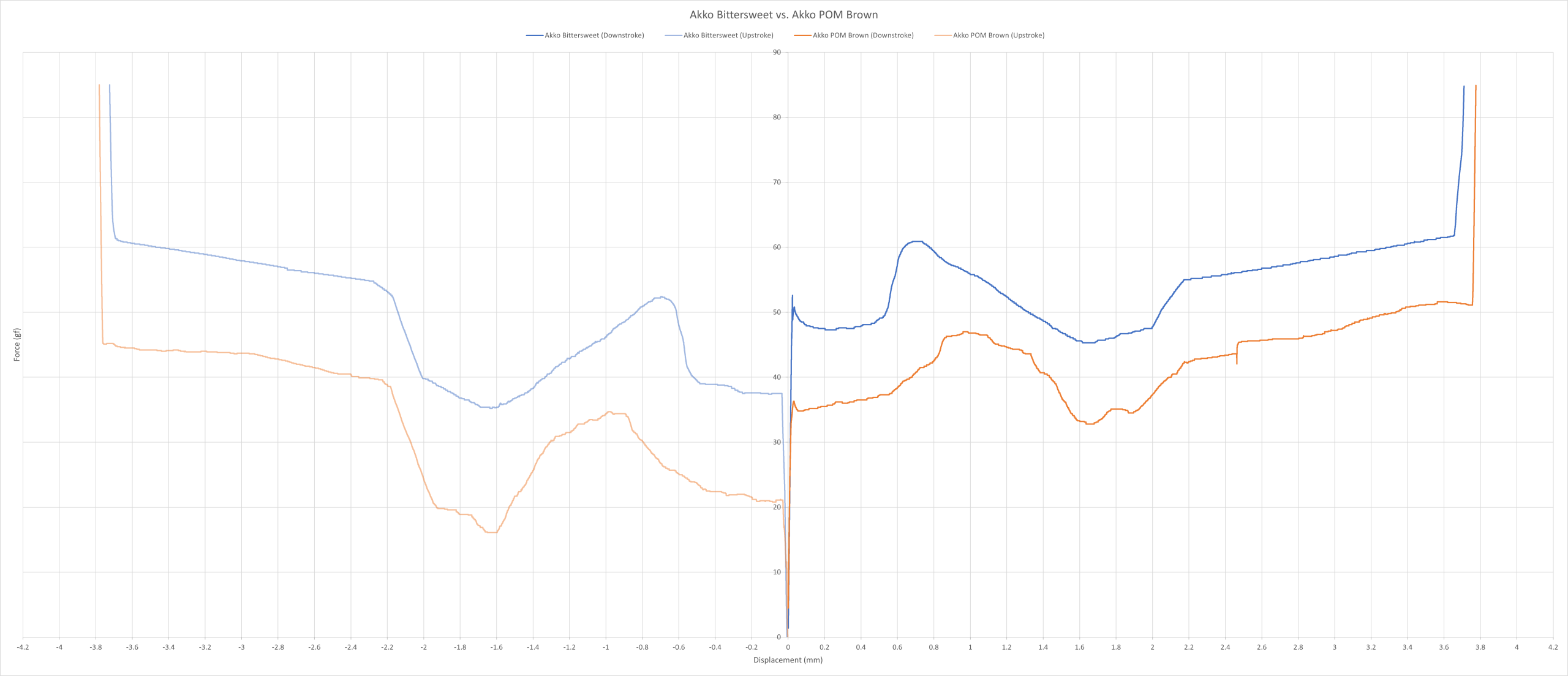
Akko Bittersweet vs. Akko POM Brown force curve.
The above force curve shows a comparison between the Akko Bittersweet and the Akko POM Brown. It’s clear that the Bittersweet is the heavier switch. Although, the POM Brown is lighter, its tactile bump is ever so slightly stronger and sharper.
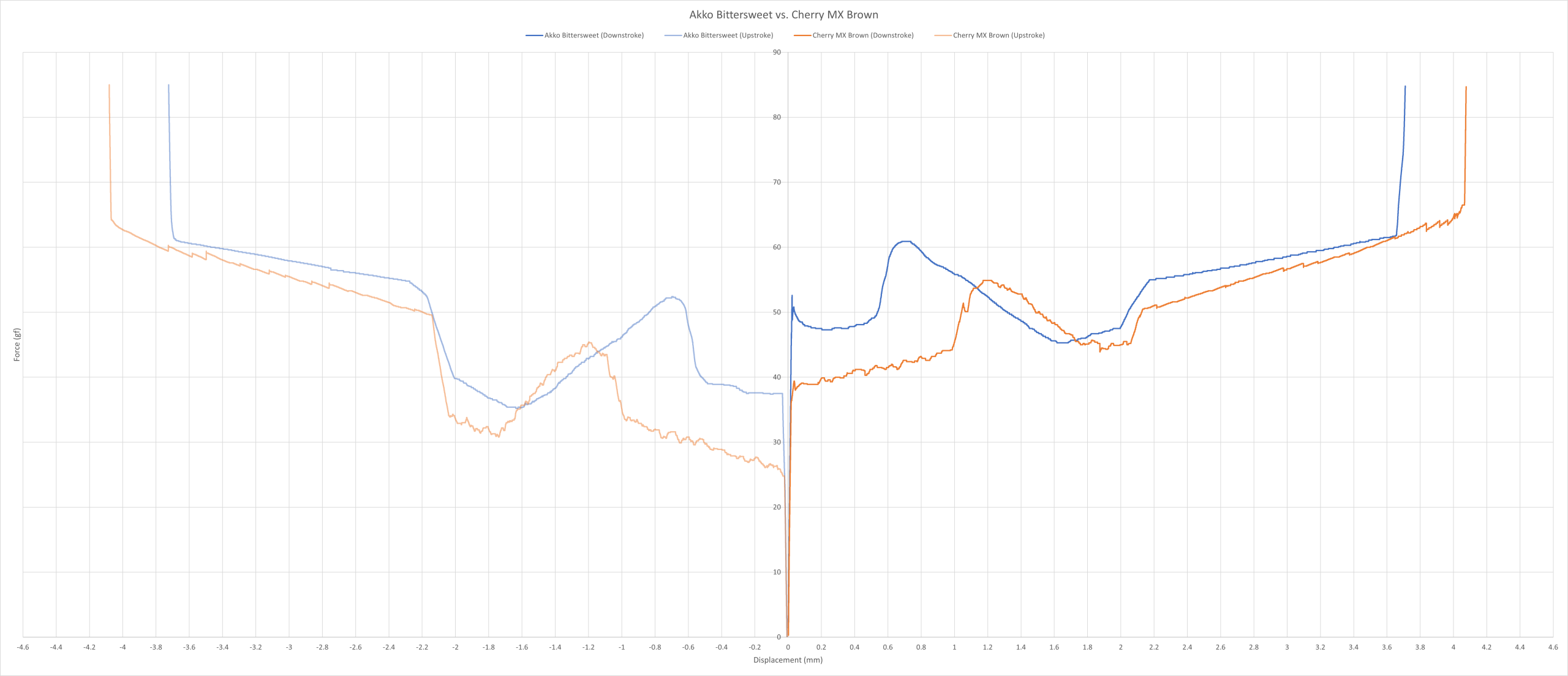
Akko Bittersweet vs. Cherry MX Brown force curve.
The above force curve shows a comparison between the Akko Bittersweet and the Cherry Brown. The Cherry switch has a longer travel and is overall lighter. Although, the biggest difference between the two is just how much smoother the Bittersweet switch is; the MX Brown clearly suffers here. Their tactile strength and sharpness are very similar though.
Overall, this is a relatively consistent, medium-weighted tactile switch with similarities to the Cherry MX Brown in terms of its tactility implementation. They aren’t for me, and I wish they were more consistent! Akko is usually pretty good at this, but they failed to deliver it on this occasion.
Sound: 6/10
Given the “Bittersweet is designed to be the tactile counterpart to Rosewood”, they have a thocky sound signature even on my clacky based keyboard build.
Although, these have to be my least favourite sounding switch from Akko. I think a combination of them being designed to be thocky in a clacky keyboard just doesn’t suit it. Plus, if you listen carefully, you can hear hints of scratchiness.
Overall, I hate to say it, but these are probably the worst sounding Akko switch. Still, it sounds better than your average rubber-dome, but if that’s the comparison, something must’ve gone wrong somewhere.
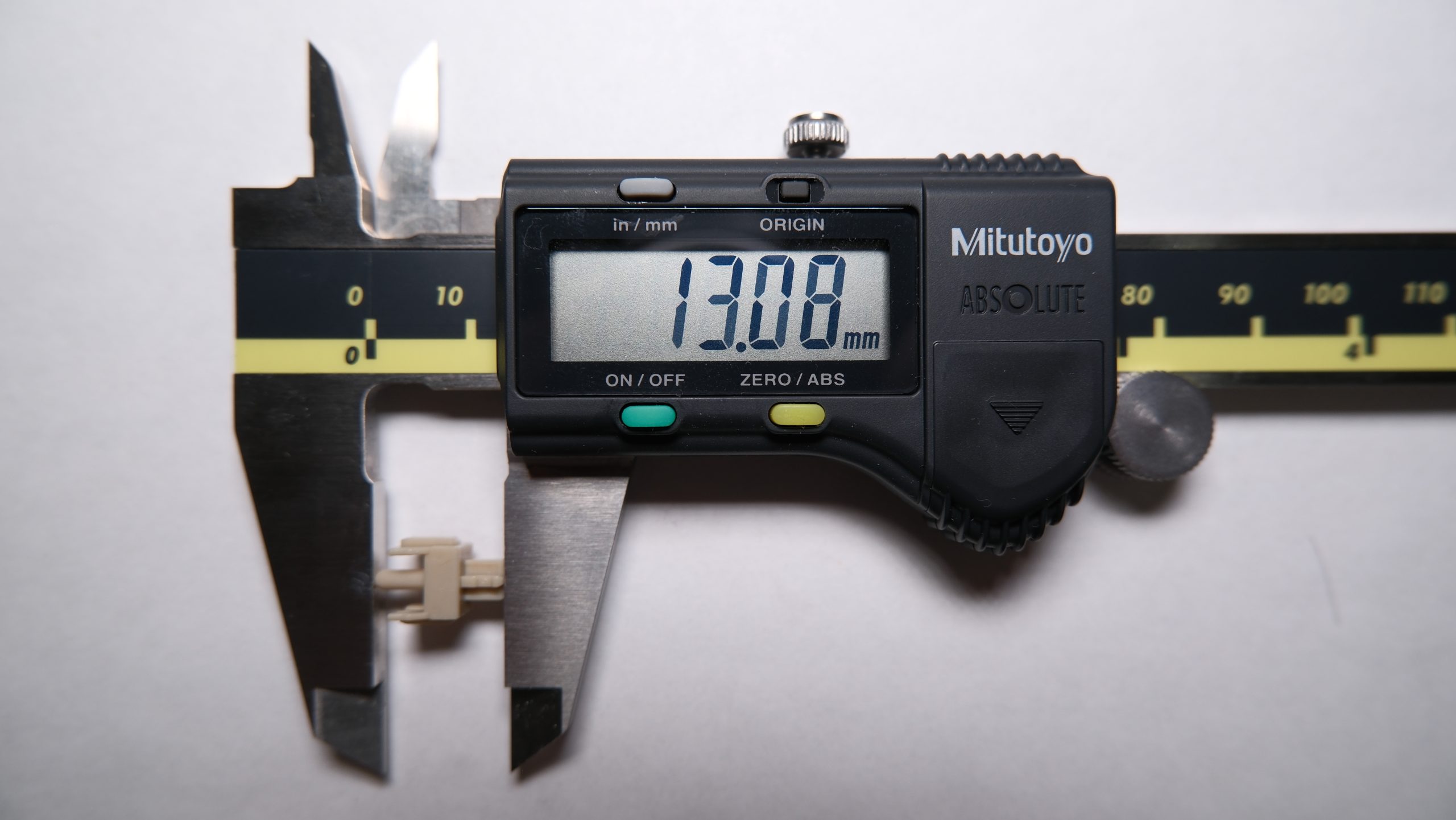
The Akko Bittersweet stem length is 13.08mm.
Typing Performance: 6/10
Firstly, my batch had a short (1 day), but noticeable break-in period. However, they became smoother shortly after that.
Secondly, even though I appreciate the added weight compared to the Cherry MX Brown, its tactility remains largely unchanged. Plenty of folks will be happy to here that, but I prefer a stronger and sharper tactile event.
Lastly, I have to give them credit as they are smoother and more consistent when compared to the Cherry MX Brown. Although, the Bittersweet switch falls below the standard Akko has set with many of their existing switches – with many being the smoothest of their class. I’m not sure what went wrong here, but they clearly messed something up with this formula.
Overall, they’re better than average, and many will enjoy the MX Brown-like tactility along with the heavier weighting. Don’t get me wrong, it’s not the worst offender out there; there is plenty of potential for this switch.
Gaming Performance: 7/10
If you’ve read this far and haven’t skipped (first of all, thank you), then you’ll know that it’s falling below the standard for an Akko switch. However, that changes slightly for gaming.
While they could’ve been more consistent in other areas, I found them to be really consistent in gaming, especially in fast-paced environments, but they were fine in slower-paced games too.
However, just like with many tactile switches, their tactility was more or less non-existent throughout my gaming sessions. I couldn’t even really feel them in slower-paced games, so I wouldn’t rely on their tactility if I were you.
Additionally, if you value having a quieter switch, then these are a good option. They’re quieter than normal since they lean towards a thockier sound signature.
Overall, I liked gaming with these. Its consistency was really good and its heavier weighting meant I didn’t make too many accidental keypresses. I just wished their tactility was to my preference and were smoother out of the gate.
Final Score = 31/50 (62%)
